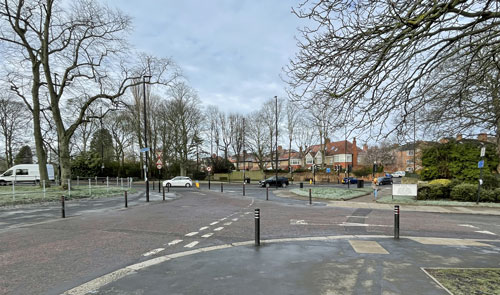A new pattern of wards is being developed for Newcastle City Council.
The following news release was issued by Newcastle City Council:
The Local Government Boundary Commission has decided that the number of councillors in Newcastle should be 78, the same as now.
The Local Government Boundary Commission wants to hear what residents and organisations think about their local area. A 10-week consultation inviting proposals will run until 1 April 2024.
The Commission is the independent body that draws these boundaries.
It is reviewing Newcastle to make sure councillors represent about the same number of electors, and that ward arrangements help the council work effectively. It wants to be sure that its proposals reflect community ties and identities.
The Commission is interested in views on which communities should be part of the same ward. What facilities do people share, such as parks, leisure centres or schools and shopping areas? What issues do neighbouring communities face that they have in common, such as high numbers of visitors or heavy traffic?
Have there been new housing or commercial developments that have changed the focus of communities? And are there roads, rivers, railways, or other features that people believe form strong boundaries between neighbourhoods?
The Commission will use local views to help it draw up proposals for new ward boundaries. There will be a further round of consultation once the Commission has drawn up those proposals.
Launching the consultation Professor Colin Mellors, Chair of the Commission, said: “We want people in Newcastle to help us.
“We are starting to draw up new wards for Newcastle. We want our proposals for new electoral arrangements to reflect communities. We also want them to be easy to understand and convenient for local people.
“Residents and local organisations can help us understand community ties and identities at this early stage of the process.
“It’s easy to get involved. Go to our website. Or you can e-mail or write to us.
“Just tell us what you think and give us some details why you think that. It’s really simple, so do get involved.”
People can give their views via our website at https://www.lgbce.org.uk/all-reviews/newcastle-upon-tyne/feedback
People can also give their views by e-mail at reviews@lgbce.org.uk, and by post:
Review Officer (Newcastle upon Tyne)
LGBCE
PO Box 133
Blyth
NE24 9FE
The Local Government Boundary Commission for England is an independent body accountable to Parliament. It recommends fair electoral and boundary arrangements for local authorities in England. In doing so, it aims to
- Make sure that, within an authority, each councillor represents a similar number of electors
- Reflect the electoral cycle so that each ward is represented by three councillors
- Create boundaries that are appropriate, and reflect community ties and identities
The above news story was issued by Newcastle City Council and is available to read on the Newcastle City Council website. It has been included here for information and does not necessarily represent the views of High West Jesmond Residents’ Association.


